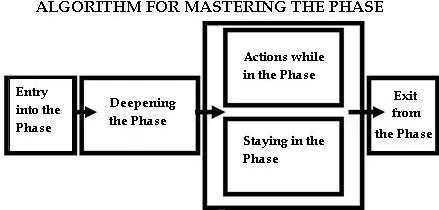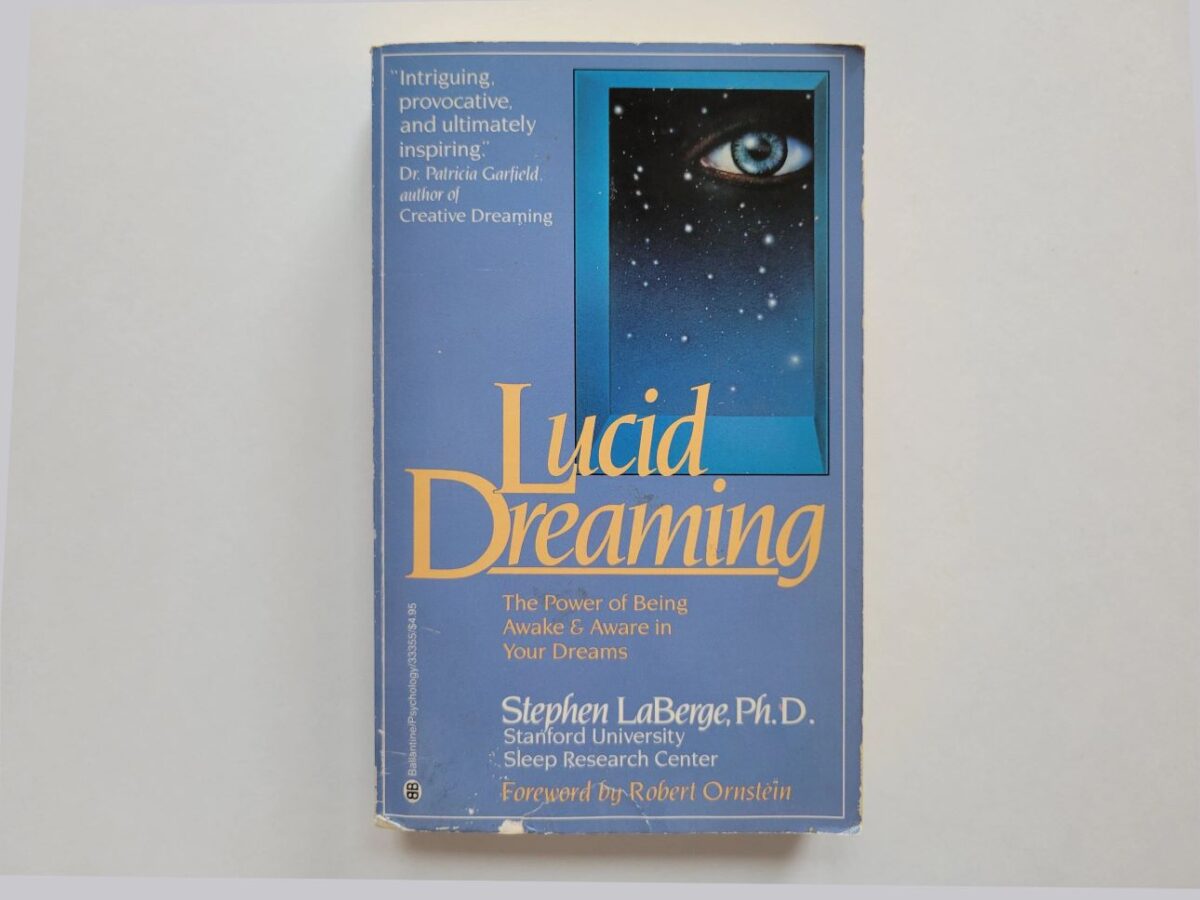Always remember that a typical lucid dreaming experience consists of several repeated entries and exits. Essentially, in most cases it is possible to re-enter lucid dreaming through the use of separation or lucid dreaming state creation techniques immediately after returning to the body. If the practitioner has just left lucid dreaming, the brain is still close to it and appropriate techniques may be applied in order to continue the journey.
Natalya Kozhenova
Shchelkovo, Russia
When I was about 17 or 18 years old, I read some esoteric articles on astral projection. They seemed quite interesting to me, but no more than a curiosity – I did not particularly believe in such things.
One evening, I went to bed as usual. I woke up in the middle of the night, but was unable to move my body and there was a loud noise in my head. Having been reminded of those articles, I simply tried to levitate and I managed to do so, as if through my forehead somehow. The sensation of flying was very realistic, to my great surprise. The first thought that occurred to me was, "Wow, these astral guys weren’t lying!” I hovered above my body for some time in the dark. I thought of vision, and it started to appear. I then flew towards the window, and upon turning around in to face my body (M.R.: no deepening and no plan of action), I saw it in its proper place. I decided to fly back to it and touch it. When I finally poked it, it sucked my back into it, causing a quite strange sensation (M.R.: no maintaining and no re-entering).
Maintaining
Perhaps the only thing that an advanced practitioner might still have to struggle with is maintaining lucid dreaming. However, it’s only a struggle in a relative sense, and more of a struggle for perfection. An essential way that an experienced lucid dreamingr differs from a novice is that the length of time that he stays in lucid dreaming is fully sufficient for his needs. No matter how long he stays in lucid dreaming, this duration is multiplied by his many lucid dreaming entrances over the course of even a single day. As a result, he always accomplishes all of the tasks he has set for himself, and often quite quickly. And if a practitioner accomplishes all his objectives, why should he be dissatisfied with the duration of a lucid dream?
The first sign of an advanced practitioner is that he always has a plan of action for lucid dreaming. An interesting and useful one. He always knows what he will do in lucid dreaming and how he will apply it. He always wants to enter lucid dreaming, as he always has many things to do in it, even if they sometimes have nothing to do with the physical world. Moreover, many advanced practitioners undertake their own studies of lucid dreaming, which serves to further stimulate their own practice and personal development.
The main problem novices have in maintaining lucid dreaming paradoxically consists in fear of a foul, i.e. an involuntary return to the body. This usually causes them to perform the maintaining techniques incorrectly, and they nearly always lack the intention of maintaining, not to mention confidence in their own abilities. But this is a decisive factor when it comes to maintaining lucid dreaming.
A novice performs maintaining techniques in order to not be returned back to the body or not fall asleep, while an experienced practitioner performs maintaining techniques in order to maintain his presence in lucid dreaming.
As a result, the former is often soundly thrown out of lucid dreaming, while the latter has experiences that are many times longer and more relaxed. Even thinking of one’s own body while in lucid dreaming is fraught with the danger of returning to it, to say nothing of techniques which are focused on the conscious ability to reenter the body.
While in lucid dreaming and when performing any maintaining technique, a practitioner should be extremely confident that he will be in lucid dreaming for just as long as he needs to be. Such confidence alone is sufficient to substantially prolong the average lucid dreaming.
However, when maintaining lucid dreaming, advanced practitioners have to face the real issue of keeping their minds out of their bodies – and this means false fouls. The absolute majority of returns to the body from lucid dreaming are false. Depending on one’s personal characteristics and level of practice, from 50 to 90% of all returns to the body can be false. That’s precisely why the mandatory rule is: upon returning to the body, one must try to separate from it again. Even when following this rule, the experience nonetheless often ends in a false awakening that is only recognized some time after the fact.
The problem is partially resolved by understanding that a return to the body from lucid dreaming means nothing at all. If it happens, it’s but a trifle for one’s practice not worthy of the slightest attention. If you were just in lucid dreaming, then it can’t end so easily or quickly. An experienced practitioner should always (always!) try to re-enter lucid dreaming and do it with as much self-assurance as possible. And if one is at last unable to leave the body again, then one must perform at least two reality checks (hyperconcentration, breathing out through a pinched nose, looking for inconsistencies, etc.), as there is a high likelihood that one is still nevertheless in lucid dreaming. Reality checks alone can prolong a lucid dream experience by up to 20 percent. In summary, at higher levels of practice, a lucid dreamr must try to re-exit his body. If he is unable to, then he must perform reality checks.
There are several reasons why practically all practitioners have such problems with false returns to the body. One of the main ones is a certain lack of confidence in one’s own powers when maintaining lucid dreaming, which is remedied by intensifying one’s intention and concentration. However, there is also a certain problem that is practically resistant to controllable solution and is brought about by the astounding characteristics of human consciousness during altered states: false memory.
Sometimes, a cluster of false memories – yet quite detailed and emotionally-charged ones – will suddenly appear in a lucid dreamr’s memory during a lucid dream experience. This indicates that he has long been in lucid dreaming, and thus quite a psychologically accepting state. As a result, a lucid dreamr may not put up much resistance to a foul, or even control the foul himself. As soon as he returns to the body, he’ll realize that lucid dreaming was actually much shorter than it seemed to his mind. Sometimes only a detailed analysis can uncover this uncommon problem and bring the practitioner to understand that he was not in lucid dreaming for the seeming 5 minutes, but merely 10 seconds. The prescription for this strange trick of the human mind is nevertheless the same: mandatory re-exits from the body no matter what it seems or what one thinks, and if this is unsuccessful – reality checks.
Anthony Pucci
I had just had a slightly disturbing dream. (I can’t recall what it was now, but it left me a little shaken.) I woke up, eyes still closed, and completely still. “Well, I’ll give it a shot,” I thought to myself. I tried to move my arms without using muscles. My right arm rose slightly, and I’ve had some experiences in the past that helped me remember the tingling sensations present during separation – holy cow, it’s finally working!
I was still a little doubtful when it came time to get up, but I tried nevertheless and that "electric shock" sort of feeling coursed through me after total separation. "I did it," I said aloud. "I can go see her now." Who she is may be explained later if I feel up to it, but for now, I will call her Mia, since she is relevant and that name is easier for me to type. I regained my composure and recalled that I had to deepen, and did so. I felt the walls, the bed posts, and my clothes. I was wearing a very long shirt (down past my waist) and some boxer-briefs, instead of what I had gone to sleep in.
When I finally got my vision to return, everything seemed larger than it should’ve been, and I felt slightly anxious, sort of like that paranoia you feel after watching a scary movie. Regardless, I pushed through it. I went to my door. “Mia’s behind this door,” I thought to myself. It didn’t lead anywhere unusual, just out into my hall. Again, things were a little larger than they should’ve been and a few places were covered in a very dim greenish light. I called her name, beckoning, “Mia?” My voice was quiet and shaken. I couldn’t seem to regain my composure for some reason. I continued calling her name, and asked, "Where are you?"
I heard her voice in my head responding, "Huh? I’m right here." I went down the hall in a half-panic, checking various places in the house for her. Everywhere I went was extra-large and dimly lit in green. "Where is here?!" I cried. Her voice answered me again, "the usual place." I was getting frustrated now. I wanted to see Mia badly, asking, "Where’s the usual place?!" I retraced my steps. Maybe she was behind me.
Unfortunately, that’s where my story ends, because I returned to my body soon afterwards. I tried to leave it again, but I couldn’t budge. The residual doubt and fear in my mind may have held me back. I know I made a few mistakes in my techniques, namely not being absolutely 100% convinced that my door would lead me to Mia, and not maintaining.
ALGORITHM FOR MASTERING lucid dreaming
A novice practitioner must understand the procedure for learning and mastering lucid dreaming entry. This procedure consists of several primary steps, each of which is a unique science unto itself.
The first and most important step addresses the techniques used to enter lucid dreaming state. It is not necessary to master every type of entrance technique (direct, indirect, dream consciousness). Learning and applying the easiest techniques provides the necessary prerequisites to more advanced methods.
Contrary to popular opinion, the need for conscious techniques does not cease upon lucid dreaming entrance. It is absolutely necessary to learn and apply methods for deepening lucid dreaming to achieve a consistently hyper-realistic environment. Failing to apply deepening techniques almost guarantees that experiences will be dull, uninteresting, and subsequent practice short-lived. Practitioners should immediately learn and apply deepening techniques after mastering any one entrance method.
The third step involves mastering techniques for maintaining lucid dreaming, as without them the average person would have lucid dreaming experiences of much shorter duration than is possible. When in lucid dreaming, the question of how to leave it almost never occurs. On the contrary, one is normally thrust from it in the course of several seconds if one simply does nothing.
After learning all the necessary techniques for mastering lucid dreaming state, it is time to learn and apply methods of control, which encompass the ability to translocate, find and interact with objects, influence surroundings, and so forth.
Once the previously noted steps have been accomplished, a practitioner may proceed to apply lucid dreaming experiences to enhance everyday life. Over the course of this guidebook, we will examine dozens of these valuable applications in great detail.

With basic skills mastered, remember that practicing lucid dreaming is worthwhile and effective only when the results are consistent. If a practitioner enters lucid dreaming only once a month, the experience will be too emotional to allow for observation of important principles and methodologies. lucid dreaming should be encountered at least once a week. Working toward a level higher than a weekly lucid dreaming entry is ambitious, even beneficial. Realistically, two to four lucid dreaming experiences per week might be considered the level of a master, but this is far from the upward boundary (2-6 lucid dreams per one day!).
As a rule, novice practitioners achieve lucid dreaming less often than is desired. However, with regular attempts, success occurs more and more frequently, which should help alleviate any frustration resulting from failed attempts.
Every budding lucid dreamingr should realize that the instructions given in this textbook are the best tools for the average person to achieve lucid dreaming state. However, many have their own physiological and lifestyle idiosyncrasies, and so something might not suit them or might be counter to their nature. Minor adjustments to the instructions are permissible from the very beginning. As long as they’re minor. Substantial changes are only for people with substantial experience, and should only be made using tried and true methods. The methods work for everyone in any case, but for the experienced practitioner they are merely a template that can be fine-tuned to further improve results. If nothing at all works for a practitioner, then it’s not a question of method but a question of how well the method is being applied. This is why introducing substantial changes at beginning stages is categorically forbidden.
The aim of this book is to lay a strong foundation for individual practice that is devoid of any dubious elements. Some things might not be as fancy or fantastical as one might wish. On the other hand, everything described here is backed up by the facts. Everyone has the right to choose their own path, personal-growth philosophy, and interpretation of what is going on when building the foundation of their nascent practice.









